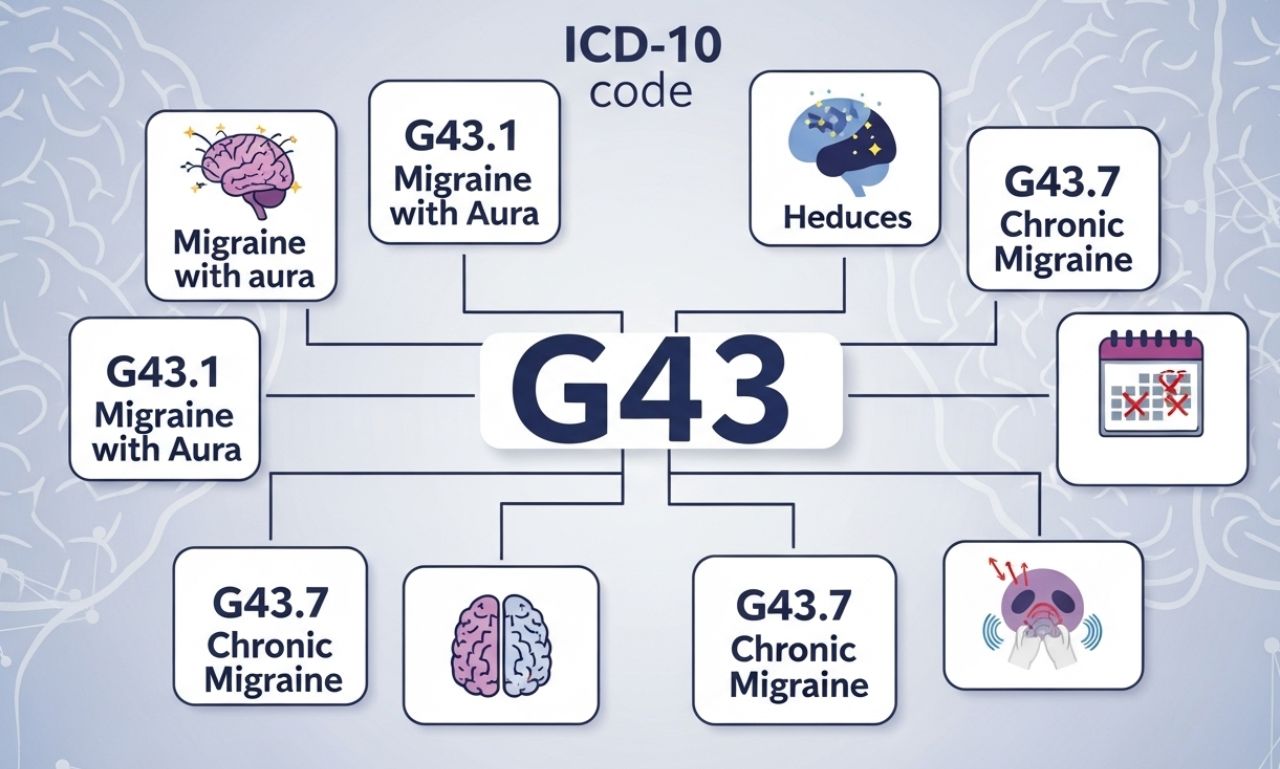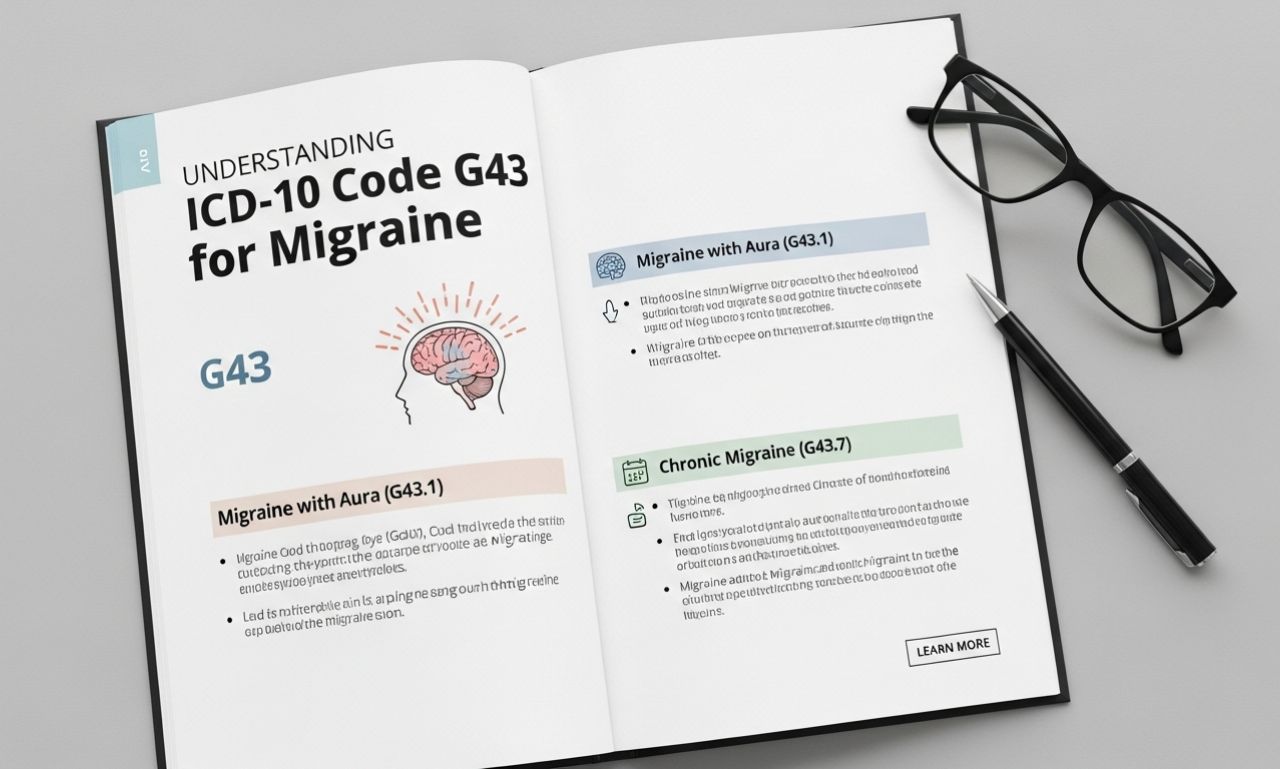In the vast and intricate world of healthcare, precision is paramount. Diseases, symptoms, and procedures are not just described with words but are meticulously cataloged using a universal language of codes. This system ensures clarity, streamlines billing, and facilitates crucial medical research. If you or a loved one has ever been diagnosed with migraine, you may have encountered the alphanumeric code CID10G43 on a medical bill, insurance form, or clinical record.
But what does this code mean? Simply put, CID10G43 is the code for “Migraine” in the International Classification of Diseases, 10th Revision (ICD-10). The “CID” is a common abbreviation for “Classificação Internacional de Doenças” (Portuguese) or a direct reference to the ICD system. The “10” denotes the tenth revision, and “G43” is the specific code category for migraine disorders within Chapter VI: Diseases of the nervous system.
This article serves as your definitive guide to understanding CID10G43. We will move beyond the code itself to explore the different types of migraines it represents, its critical role in patient care and healthcare administration, and what a diagnosis under this code truly means for the millions of people affected by this debilitating neurological condition.
Understanding the ICD-10 Framework: The Backbone of Modern Medicine
Before diving into the specifics of G43, it’s essential to understand the system it belongs to. The International Classification of Diseases (ICD) is a global standard for health reporting and statistics, maintained by the World Health Organization (WHO). It is used by physicians, nurses, researchers, health information managers, coders, and policymakers to:
- Standardize Diagnosis: Provides a common language for diagnosing diseases worldwide.
- Facilitate Billing and Reimbursement: Insurance companies require specific ICD-10 codes to process claims for medical services.
- Track Epidemiological Trends: Allows governments and health organizations to monitor the incidence and prevalence of diseases, such as tracking migraine rates across populations.
- Support Research: Enables researchers to identify patient cohorts for clinical trials and study disease patterns and outcomes.
The ICD-10 code G43 is part of Chapter VI, which covers diseases of the nervous system (codes G00-G99). The “G” category specifically relates to the central nervous system.
A Deep Dive into the CID10G43 Subcategories: More Than Just a Headache
Migraine is not a monolithic condition. It presents in various forms, each with distinct characteristics. The CID10G43 code is a parent category, and its precision comes from the fourth and sometimes fifth digits that follow the decimal point. Let’s break down the most common and important subcodes.
G43.0: Migraine Without Aura (Common Migraine)
This is the most frequently diagnosed type of migraine, affecting approximately 70-90% of migraine sufferers.
- Clinical Definition: A recurrent headache disorder manifesting in attacks lasting 4-72 hours. The headache is typically unilateral (one-sided), pulsating in quality, of moderate or severe intensity, and aggravated by routine physical activity. It is often accompanied by nausea, vomiting, and/or sensitivity to light (photophobia) and sound (phonophobia).
- Key Differentiator: The absence of an “aura.” The headache phase arrives without the specific reversible neurological symptoms that characterize migraine with aura.
- Diagnostic Criteria: A diagnosis usually requires at least five attacks fulfilling these characteristics.

G43.1: Migraine With Aura (Classic Migraine)
Previously known as “classic migraine,” this type is defined by the presence of an aura—a set of reversible neurological symptoms that typically occur before the headache phase, although they can sometimes occur during or even without a following headache.
- Aura Symptoms: These can include:
- Visual Disturbances: The most common type. Seeing flashing lights, zigzag lines, blind spots (scotomas), or temporary vision loss.
- Sensory Symptoms: Tingling or numbness (paresthesia) that moves across the face or an arm.
- Speech/Language Difficulties: Difficulty speaking or finding words (dysphasia).
- Key Differentiator: The aura itself develops gradually over several minutes and typically lasts less than 60 minutes.
- Subtypes: This category includes specific codes for familial hemiplegic migraine (G43.10) and other complex auras.
G43.2: Status Migrainosus of cid10g43
This is a severe and debilitating complication of migraine. It represents a migraine attack that is both prolonged and refractory to typical treatment.
- Clinical Definition: A debilitating migraine attack lasting for more than 72 hours. The pain and associated symptoms are so intense that they often require emergency medical intervention to prevent dehydration, severe pain, and other complications.
- Significance: This code is used for severe episodes that necessitate hospital care, intravenous medications, and close monitoring.
G43.3: Complicated Migraine of cid10g43
This is a less commonly used but important category for migraines that result in persistent neurological deficits. The aura symptoms are not fully reversible and can lead to lasting damage, such as a migraine-induced stroke (migrainous infarction). Diagnosis requires neuroimaging (like an MRI) to confirm the presence of an infarct.
G43.5: Persistent Migraine Aura Without Cerebral Infarction
This rare condition involves an aura that persists for a week or more without evidence of a stroke on imaging. It is a diagnosis of exclusion and requires careful neurological evaluation.
G43.6: Episodic and Chronic Migraine
This is a critical distinction in migraine management.
- Episodic Migraine (coded under G43.0 or G43.1): Headache occurs on fewer than 15 days per month.
- Chronic Migraine (G43.7): Headache occurs on 15 or more days per month for more than three months, with at least eight of those days having migraine features. This represents a progression of the disease and often requires more aggressive preventive treatment strategies.
G43.7: Chronic Migraine
As mentioned above, this code is specifically for patients who have transitioned from episodic to chronic migraine. It signifies a high disease burden and a significant impact on quality of life.
G43.9: Migraine, Unspecified of cid10g43
This code is used when a diagnosis of migraine is confirmed, but the specific subtype is not documented or is unclear at the time of coding. It is often a temporary code until a more precise diagnosis can be established.
The Real-World Impact: Why Accurate Coding of CID10G43 Matters
The assignment of the correct CID10G43 subcode is far from an administrative formality. It has direct and tangible consequences for patients and the healthcare system.
- Guiding Treatment Decisions: A diagnosis of G43.1 (Migraine with Aura) might influence treatment choices. For example, due to a slightly elevated stroke risk, certain medications like combined hormonal contraceptives may be prescribed with caution for women with this subtype.
- Ensuring Insurance Coverage: Insurance companies use these codes to determine medical necessity. An accurate code like G43.7 (Chronic Migraine) is often required to authorize coverage for expensive preventive treatments, such as Calcitonin Gene-Related Peptide (CGRP) monoclonal antibodies (e.g., Aimovig, Emgality), Botox injections, or nerve block procedures.
- Facilitating Access to Specialized Care: A specific code helps refer patients to the appropriate specialist, such as a headache neurologist, and ensures that the receiving physician has a clear understanding of the patient’s condition.
- Supporting Disability Claims: For individuals whose migraines are severe enough to impact their ability to work, precise medical records with the correct ICD-10 codes are essential evidence for short-term or long-term disability claims.
The Diagnostic Journey: From Symptoms to Code CID10G43
How does a patient’s experience of head pain translate into a formal CID10G43 code? The process involves several steps:
- Clinical Evaluation: A healthcare provider conducts a thorough medical history and physical/neurological examination. There is no single test for migraine; diagnosis is primarily based on the patient’s reported symptoms and their match to established criteria (like the International Classification of Headache Disorders – ICHD-3).
- Differential Diagnosis: The physician must rule out other causes of headache, such as tension-type headaches, cluster headaches, sinusitis, or more serious conditions like tumors or aneurysms. This may involve imaging studies like an MRI or CT scan.
- Documentation: The physician documents the final diagnosis in the patient’s chart, specifying the migraine type (e.g., “Chronic migraine without aura”).
- Medical Coding: A certified medical coder translates the physician’s written diagnosis into the corresponding ICD-10 code (e.g., G43.71 for Chronic migraine without aura, intractable). This coded information is then used for billing and health records.
Living with a CID10G43 Diagnosis: Treatment and Management
A diagnosis coded under CID10G43 is the starting point for a comprehensive management plan. Treatment is typically multi-faceted, involving:
- Acute Medications: Taken at the onset of a migraine attack to stop the symptoms. These include triptans, NSAIDs (e.g., ibuprofen, naproxen), and anti-nausea drugs.
- Preventive Medications: Taken daily to reduce the frequency and severity of attacks. These include beta-blockers, anticonvulsants, antidepressants, and the newer CGRP inhibitors.
- Lifestyle Modifications: Identifying and avoiding triggers (e.g., specific foods, stress, lack of sleep, hormonal changes) is a cornerstone of management.
- Non-Pharmacological Therapies: Cognitive Behavioral Therapy (CBT), biofeedback, acupuncture, and physical therapy can be highly effective complements to medication.
The Future: ICD-11 and Beyond
The world of medical coding is evolving. The ICD-11 has already been released and is being gradually adopted by countries. In ICD-11, the code for migraine is 8A80. The structure is more detailed and reflects modern understanding, with categories like:
- 8A80.0: Migraine without aura
- 8A80.1: Migraine with aura
- 8A80.2: Chronic migraine
The transition to ICD-11 will bring even greater specificity, but the fundamental purpose remains the same: to accurately classify disease for better patient care.
Conclusion: CID10G43 – A Code for a Complex Condition
CID10G43 is much more than a random sequence of letters and numbers. It is the key that unlocks a standardized understanding of migraine, a complex and often misunderstood neurological disease. By breaking down its subcategories—from the common G43.0 to the severe G43.2 and the life-altering G43.7—we gain insight into the diverse experiences of migraine sufferers.
Understanding this code empowers patients to better comprehend their own medical records, advocate for appropriate treatment, and navigate the complexities of the healthcare system. For clinicians and coders, its precise application is a professional responsibility that directly influences the quality and efficacy of care. As we move forward, the continued refinement of such classification systems promises even better outcomes for the millions of people living with migraine worldwide.
